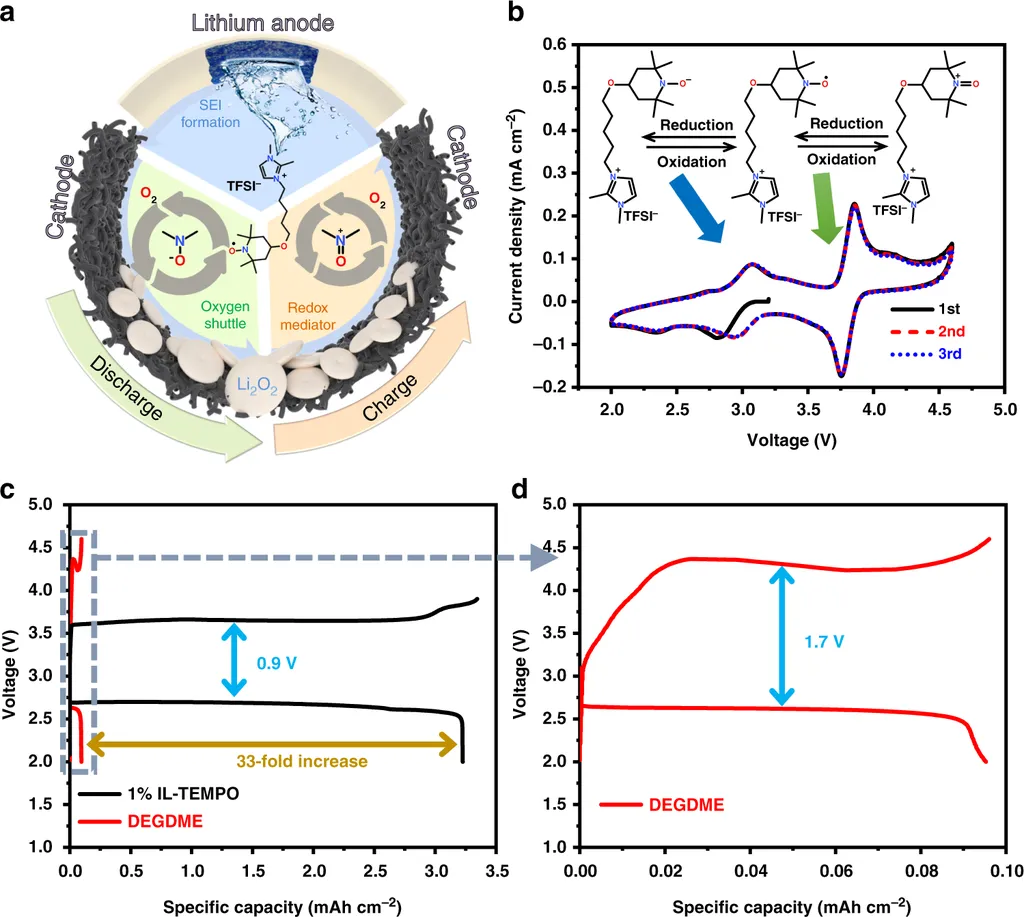In the quest for more efficient and sustainable energy storage solutions, researchers have long been captivated by the potential of lithium-oxygen batteries (LOBs). These batteries promise significantly higher energy densities than current lithium-ion technologies, making them an attractive prospect for electric vehicles and grid storage applications. However, their practical implementation has been hindered by challenges such as high overpotentials and poor cycling stability. A recent breakthrough, published in the journal Sustainable Materials (SusMat), offers a promising path forward.
At the heart of this innovation is the work of Pengfei Liu, a researcher at the College of Materials and Chemistry & Chemical Engineering at Chengdu University of Technology in Sichuan, China. Liu and his team have developed a novel approach to enhance the performance of LOBs by manipulating the electronic states of single-atom sites near the Fermi energy level. Their strategy involves introducing an axial oxygen ligand to the metal center of cobalt porphyrin (CoPP), a process that has yielded remarkable results.
The key to their success lies in the disruption of the planar tetragonal crystal field of CoPP. “By introducing an axial oxygen ligand, we induce a rearrangement of the d orbitals in the cobalt center,” Liu explains. This rearrangement causes an upward shift in the frontier orbitals, facilitating electron exchange during reactions. The increased number of unpaired electrons in the d orbitals also enhances the adsorption of CoPP-O-MXene to various oxygen species, promoting the formation of a thin film-like Li2O2.
The practical implications of this discovery are substantial. The thin film-like discharge products improve contact with the electrode surfaces, leading to easier decomposition during the charging process. As a result, CoPP-O-MXene-based LOBs demonstrate a high discharge capacity of 11,035 mAh g−¹, a low overpotential of 0.76 V, and remarkable cycling stability, enduring up to 445 cycles. These improvements represent a significant step forward in the development of practical LOBs.
The research published in Sustainable Materials (SusMat) translates to English as Sustainable Materials and Technology. The findings not only address critical performance issues but also pave the way for more efficient and durable energy storage solutions. As the energy sector continues to seek sustainable and high-capacity storage technologies, this breakthrough could play a pivotal role in shaping the future of lithium-oxygen batteries. The work by Liu and his team highlights the importance of understanding and manipulating electronic states at the atomic level, offering a blueprint for future advancements in electrocatalysis and energy storage.

